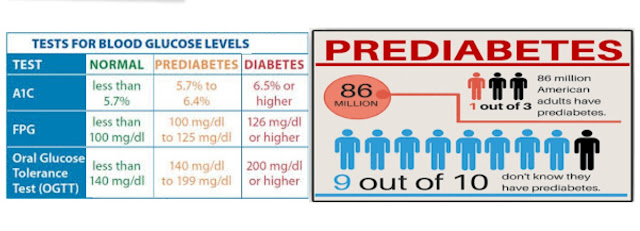Oral Diabetic Medications Therapy
Many types of treatment performed patients diabetics to get relief, one of which, namely the type of oral therapy for diabetics. Oral hypoglycemic drugs are primarily intended to assist the handling of type II diabetes mellitus patients. The selection of the proper oral hypoglycemic drugs largely determines the success of the therapy of diabetes.
Depending on the severity of the illness and the patient’s condition, oral hypoglycemic farma-teraphy can be done using one type of medication or combination and two types of drugs. Selection and determination of the regimen used hypoglycemic should consider the severity of diabetes (Glycemic levels) as well as the patient’s health condition in general including other diseases and complications.
This is the type of oral hypoglycemic drugs most formerly found, given to new adult diabetics with normal body weight and less and never experience Ketoacidosis before. Sulfonylurea compounds should not be given in people with liver disorders, kidney, and thyroid. This group of medications work stimulates the secretion of insulin in the pancreas gland, thus only effective if β Langerhans cells of the pancreas can still produce. A decrease in blood glucose levels that occurs after a grant of sulfonylurea compounds caused by insulin-secretion gland excitation by the pancreas.
Biguanida compounds that are still only used as oral hypoglycemic medication is currently the metformin. Metformin is still widely used in some countries including Indonesia, because of the frequency of occurrence of lactic acidosis quite a bit of original dose does not exceed 1700 mg/day and no disturbance of kidney and liver function.
The compound α-glucosidase inhibitors also inhibit the enzyme pancreatic α-amylase hydrolysis of polysacharides that are working in the lumen of the intestine. This medication is usually given oral medication with a dose of 150-600 mg/day. The drug is effective for sufferers with a diet high in carbohydrates and fasting plasma glucose levels less than 180 mg/dl. These drugs only affects blood glucose levels at meal times and does not affect blood glucose levels after that.
Depending on the severity of the illness and the patient’s condition, oral hypoglycemic farma-teraphy can be done using one type of medication or combination and two types of drugs. Selection and determination of the regimen used hypoglycemic should consider the severity of diabetes (Glycemic levels) as well as the patient’s health condition in general including other diseases and complications.
Oral Diabetic Medications
Based on the mechanism works, oral hypoglycemic medications can be divided into 5 groups, namely:
The Sulfonylurea
This class is the medicine which increases the secretion of insulin.This is the type of oral hypoglycemic drugs most formerly found, given to new adult diabetics with normal body weight and less and never experience Ketoacidosis before. Sulfonylurea compounds should not be given in people with liver disorders, kidney, and thyroid. This group of medications work stimulates the secretion of insulin in the pancreas gland, thus only effective if β Langerhans cells of the pancreas can still produce. A decrease in blood glucose levels that occurs after a grant of sulfonylurea compounds caused by insulin-secretion gland excitation by the pancreas.
The Meglitinida and the derivative Fenilalanin
This is the new generation of hypoglycemic drugs the way it works is similar to the sulfonilurea that is working to increase insulin secretion and sitesis by the pancreas gland. Usually these groups of medicinal compounds used in the form of combination with other oral antidiabetic drugs.The Biguanida
Working directly on the liver, lowers the production of glucose liver. Compounds of this class do not stimulate the secretion of insulin and hardly ever lead to hypoglycemia.Biguanida compounds that are still only used as oral hypoglycemic medication is currently the metformin. Metformin is still widely used in some countries including Indonesia, because of the frequency of occurrence of lactic acidosis quite a bit of original dose does not exceed 1700 mg/day and no disturbance of kidney and liver function.
The Tiazolidindion (TZD)
Works to increase the body’s sensitivity to insulin with the bind to (peroxisome proliferator-activated receptor-gamma) in muscle, fat, and liver tissue to lower insulin resistance. TZD compounds also lowered the speed of glikoneogenesis.The α-Glucosidase Inhibitor
It works to inhibit the enzyme Alpha flukosidase found on the wall of the intestine. The enzymes α-glucosidase (maltase, isomaltase, glukomaltase and sukrase) serves to hydrolyze oligosakarida, on the walls of the intestine. Inhibition of this enzyme work can effectively reduce the digestion of complex carbohydrates, so that it can reduce the increase in the post prandial glucose levels in diabetics.The compound α-glucosidase inhibitors also inhibit the enzyme pancreatic α-amylase hydrolysis of polysacharides that are working in the lumen of the intestine. This medication is usually given oral medication with a dose of 150-600 mg/day. The drug is effective for sufferers with a diet high in carbohydrates and fasting plasma glucose levels less than 180 mg/dl. These drugs only affects blood glucose levels at meal times and does not affect blood glucose levels after that.
RECOMMENDED TO READ: The Warning about Diabetic Oral Meds











Comments
Post a Comment